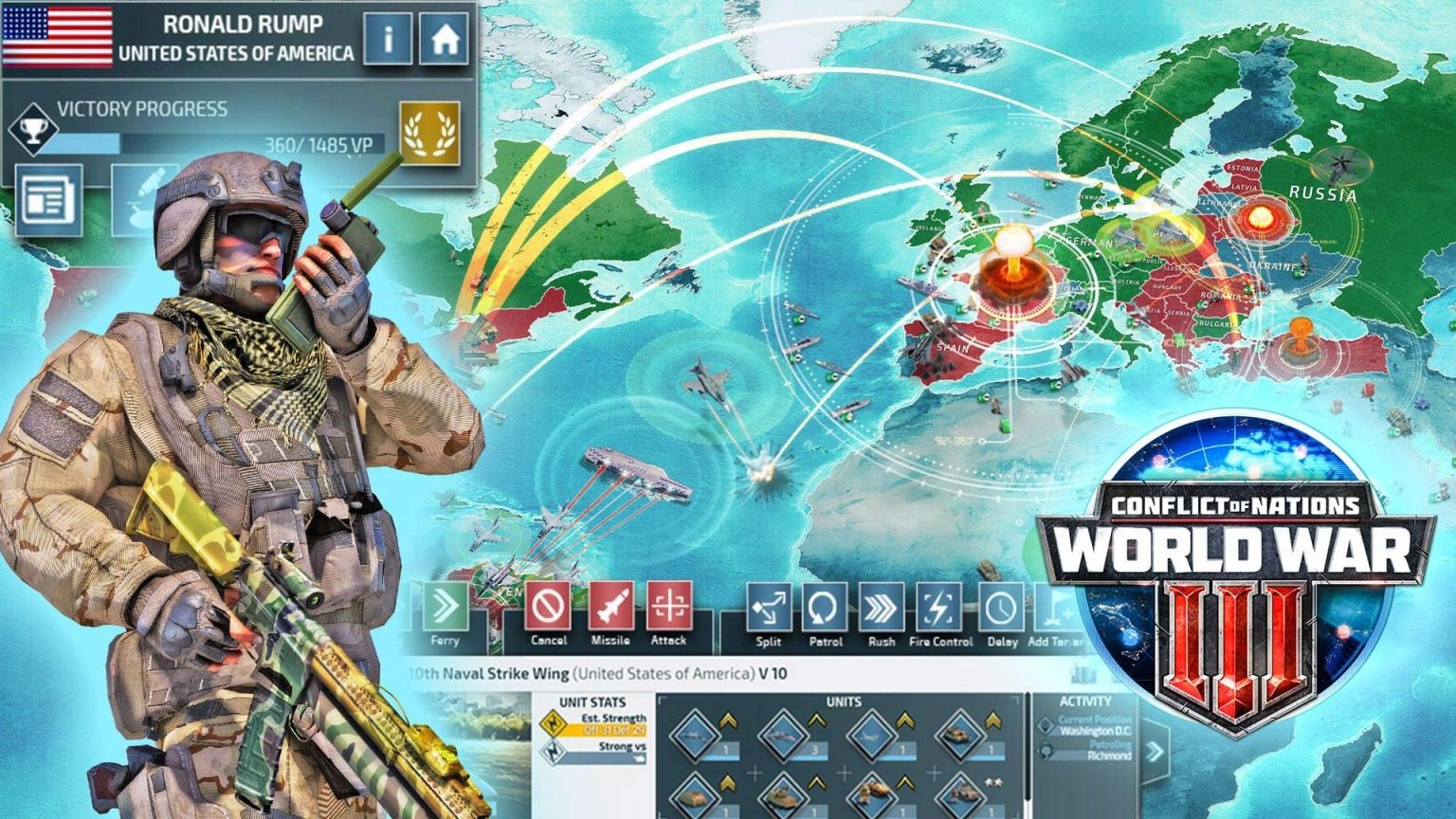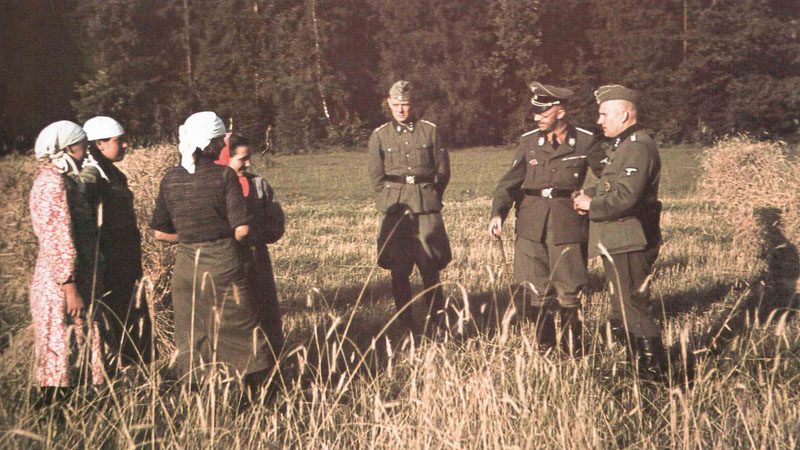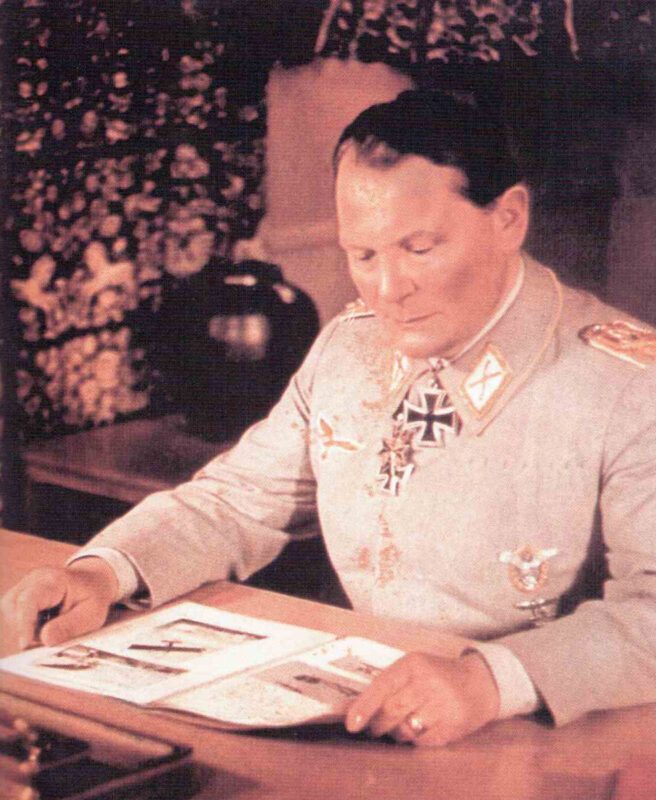Erwin Rommel Biography: Life, Military Legacy & The Desert Fox Story.
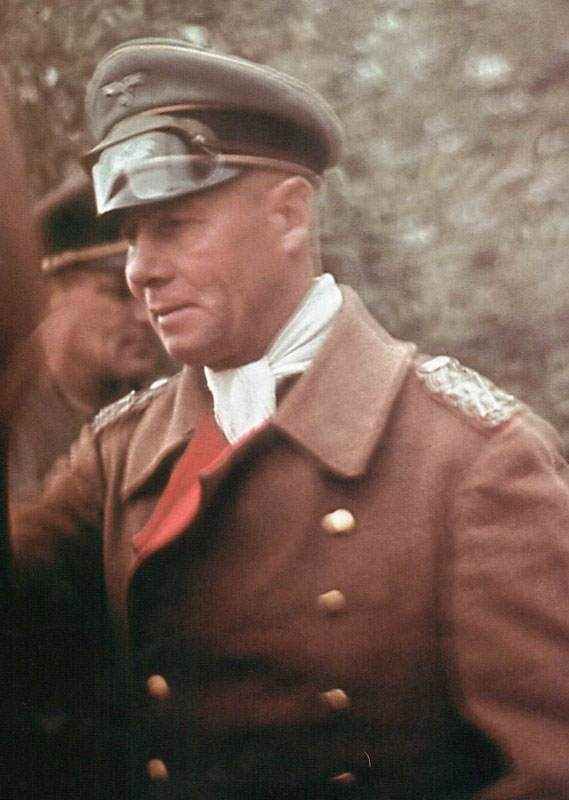
Table of Contents
Erwin Rommel stands out as one of World War II’s most complicated military figures. He became famous for his tactical brilliance, even while serving a regime responsible for horrific crimes.
Born in 1891 in the German Kingdom of Württemberg, Rommel came from humble beginnings. He rose to field marshal, earning respect from both allies and enemies for his battlefield genius.
Rommel gained his greatest fame as commander of the Afrika Korps in North Africa. His innovative tank warfare and strategic moves earned him the nickname “Desert Fox.”
His military journey stretched across two world wars. He started as a young officer in World War I and later led crucial campaigns in France and North Africa during World War II.
The story of Erwin Rommel shows how military talent can get tangled up with history’s darkest moments. His path from decorated soldier to suspected conspirator against Hitler highlights the tough choices German officers faced during the Nazi era.
Rommel’s life ended tragically in 1944. He was forced to commit suicide after being implicated in a plot to kill Hitler.
Early Life and Education
Erwin Johannes Eugen Rommel was born on November 15, 1891, in Heidenheim, a small town in the Kingdom of Württemberg. His family valued education and hard work, which shaped his character early on.
Family Background
Rommel came from a family of educators in southern Germany. His father, also named Erwin Rommel, taught mathematics and later became a school headmaster.
His mother, Helene von Luz, came from a respected local family. The Rommels belonged to the Swabian middle class, where discipline and education were the norm.
Rommel wasn’t an only child; he had several siblings who also went into professional careers. The family atmosphere pushed learning and personal achievement.
Unlike many German military officers of his era, Rommel had no military tradition in his family. Both his father and grandfather were teachers, making him an outlier among future members of the German officer corps.
Childhood in Heidenheim
Young Erwin was small for his age and seemed quiet and docile as a child. His teachers saw him as a poor student at first, but that would change as he grew older.
During his teenage years, Rommel became tougher and more serious. He started showing the kind of daring and self-reliance that would define his military career.
Some say he could be stubborn—maybe even pigheaded at times. That determination helped him later in life, especially in military situations.
Rommel spent his early years in Heidenheim an der Brenz, a stable place in southern Germany. It gave him a solid foundation during the late 19th century.
Schooling and Academic Interests
Rommel’s grades improved a lot as he hit his teens. He started to show some of the mathematical talent passed down from his father and grandfather.
He wanted to study engineering after finishing school. In fact, he was interested in working for the Zeppelin Company at Friedrichshafen, which shows his early fascination with new technology.
But his father didn’t approve of this plan. That disagreement sent Rommel down a different path—one that would change history. Instead of engineering, he entered military service.
His background in math and analytical thinking really paid off later. Those skills helped him develop tactical innovations and solve tough battlefield problems.
Military Beginnings and World War I Service
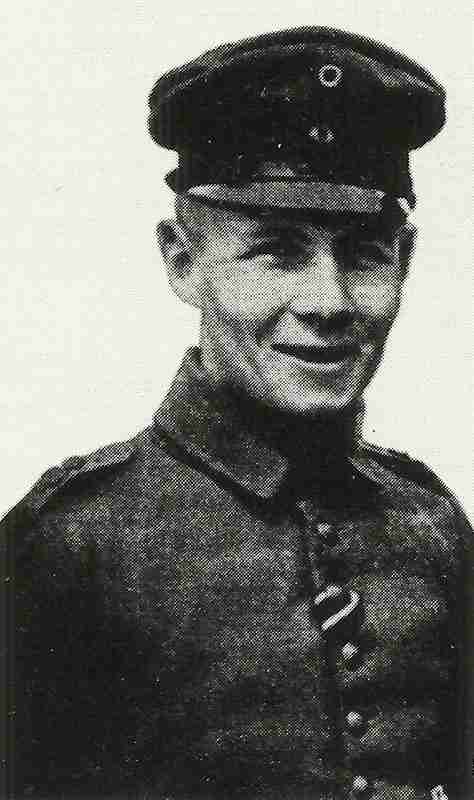
Rommel kicked off his military career in 1910 by joining the German Army as an officer candidate. World War I transformed him from an inexperienced lieutenant into a highly decorated combat leader.
He earned Germany’s highest military honors for daring operations in France, Romania, and Italy. Those early battles shaped him into the commander people would later admire—or fear.
Joining the German Army
Rommel began his service in July 1910 at age 19, joining the 124th Württemberg Infantry Regiment as an officer candidate. This was a big step away from his family’s academic roots.
He trained at the Dresden Infantry School, where the program was tough and meant to prepare young men to lead troops in combat. Rommel graduated and became a second lieutenant in January 1912.
The German military valued discipline and tactical training, and Rommel thrived in both. He showed a knack for leadership that would become his trademark.
Infantry Training and Early Postings
When World War I broke out in August 1914, Rommel was with his regiment on the Western Front. He’d just been promoted to first lieutenant.
His unit was among the first German forces to clash with French troops. Rommel’s baptism by fire came in September 1914 during fighting in France.
He got wounded in the leg during a bayonet charge against French positions. Out of ammo and outnumbered, he fought three French soldiers in hand-to-hand combat.
This act earned him the Iron Cross Second Class on September 30, 1914. He was the first lieutenant in his regiment to get this decoration.
His wound kept him in the hospital for three months before he could return to the front lines.
Experiences in France and Italy
After recovering, Rommel returned to combat in early 1915. He commanded the 9th Company and kept showing exceptional bravery.
In 1916, he moved to mountain warfare units for specialized training. He fought on the Eastern Front against Romanian forces, and with fewer than 200 men, captured 400 Romanian prisoners in a January 1917 attack.
His most famous World War I action happened during the Battle of Caporetto in October 1917. Leading a mountain battalion of about 600 men, he launched a daring 50-hour operation against Italian positions at Mount Matajur.
His unit captured 9,000 prisoners, including 150 officers, and seized roughly 150 artillery pieces. Not bad for a young officer, right?
Recognition and Honors
Rommel’s heroism at Caporetto earned him Germany’s highest military decoration, the Pour le Mérite, on December 10, 1917. Kaiser Wilhelm II gave him the award personally.
At just 26, Rommel was unusually young to receive this honor, which usually went to generals. Throughout the war, he racked up a serious collection of medals and decorations.
These included the Iron Cross First Class, Württemberg orders, and Austrian military crosses. His repeated wounds got him the Wound Badge in Silver.
Key World War I Awards:
- Pour le Mérite (December 1917)
- Iron Cross First and Second Class
- Württemberg Gold Medal of Merit
- Württemberg Military Merit Order
- Honor Cross of World War 1914/1918
Rommel later drew on these war experiences when he wrote his famous military manual Infantry Attacks in 1937.
Rise in the German Military and World War II
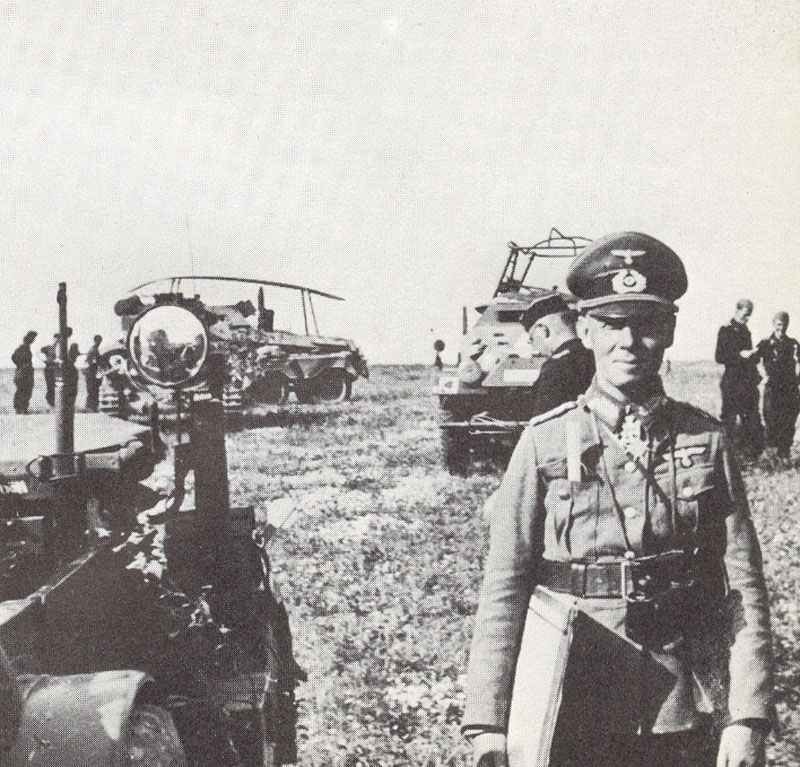
Rommel’s rapid rise in the German Army really got going with his leadership of the 7th Panzer Division during the 1940 campaign in France. He used blitzkrieg tactics in new ways, earning the division the nickname “Ghost Division.”
His bold moves led to big awards, including the Knight’s Cross of the Iron Cross. People on both sides of the war took notice.
Command of the 7th Panzer Division
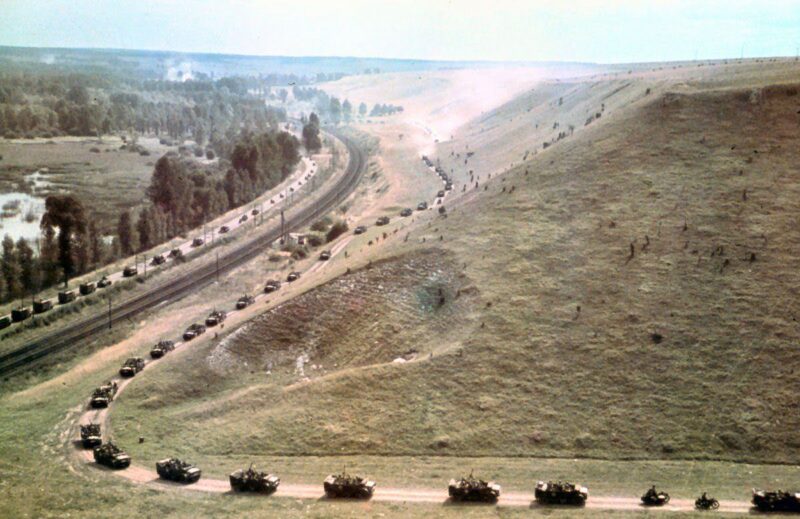
In February 1940, Rommel took command of the 7th Panzer Division. This was a huge leap for someone who’d spent most of his career in infantry roles.
The division got called the “Ghost Division” because it moved so fast that even German high command sometimes lost track of it. Rommel led from the front, always showing up where things were hottest.
During the Battle of France in May 1940, his division advanced faster than any other German unit. They crossed the Meuse River and plunged deep into French territory.
Rommel’s aggressive tactics threw Allied forces into confusion. His division captured thousands of prisoners while taking relatively light losses.
Early Successes and Blitzkrieg Tactics
Rommel became a master of blitzkrieg warfare during the French campaign. He combined tanks, infantry, and aircraft in coordinated attacks that moved fast and hit hard.
He focused on speed and surprise, always looking for weak spots in enemy lines. When he found one, he’d exploit it before the enemy could react.
Rommel often ignored orders to wait for reinforcements, preferring to push forward when he saw an opening. This boldness brought him impressive victories—but sometimes put his men at risk.
His success in France showed he could adapt traditional military thinking to the demands of modern warfare. Rommel understood how to use new technology and mobile tactics better than most.
Awards and Promotions
Rommel’s performance in France earned him rapid recognition. He received the Knight’s Cross of the Iron Cross in May 1940 for his division’s achievements.
Hitler himself gave Rommel the award, impressed by the results. This recognition marked Rommel as one of Germany’s rising military stars.
In January 1941, Rommel was promoted to major general. That came less than a year after taking command of the 7th Panzer Division.
The quick promotion set him up for even bigger responsibilities. It also showed how fast talented officers could rise in the expanding Wehrmacht during World War II.
The Afrika Korps and North African Campaign
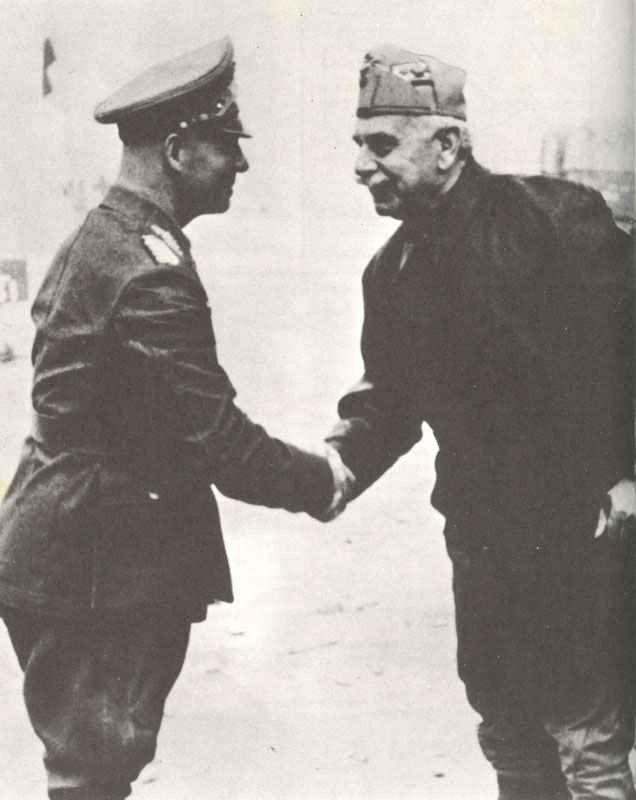
Rommel took charge of Germany’s North African campaign and turned it around with gutsy tactics and a knack for leadership. When he showed up in Libya, his reputation as the “Desert Fox” started taking shape.
Arrival in Libya
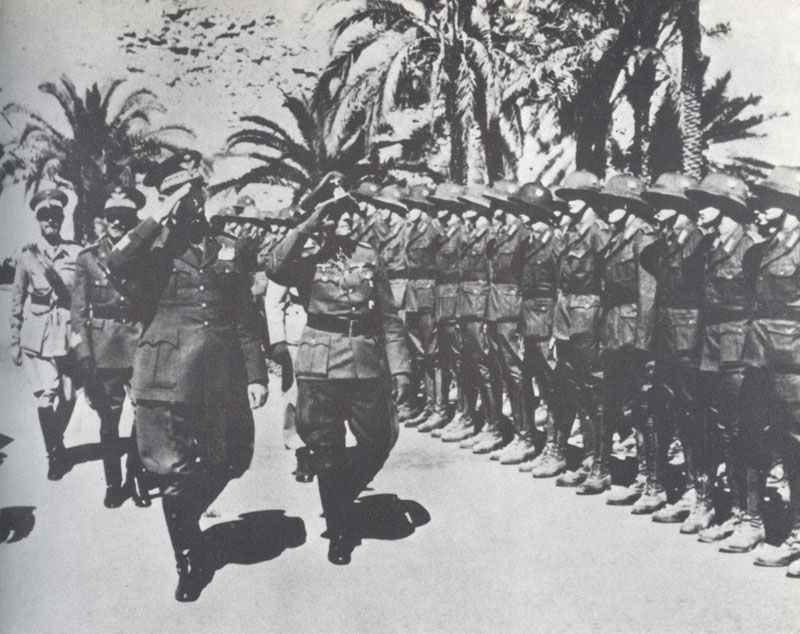
Rommel landed in Libya in February 1941 to lead the Afrika Korps. Things looked grim for the Axis—Italian troops had pulled back all the way from Cairo to Tripoli after major defeats.
On February 6, 1941, Rommel got command of the German Expeditionary Corps. His force only had two understrength tank divisions. Just three days before he left, he got promoted to Generalleutnant.
Rommel didn’t waste time. He kicked off with deception tactics—staging parades where tanks circled endlessly, tricking British intelligence into thinking he had a much bigger force.
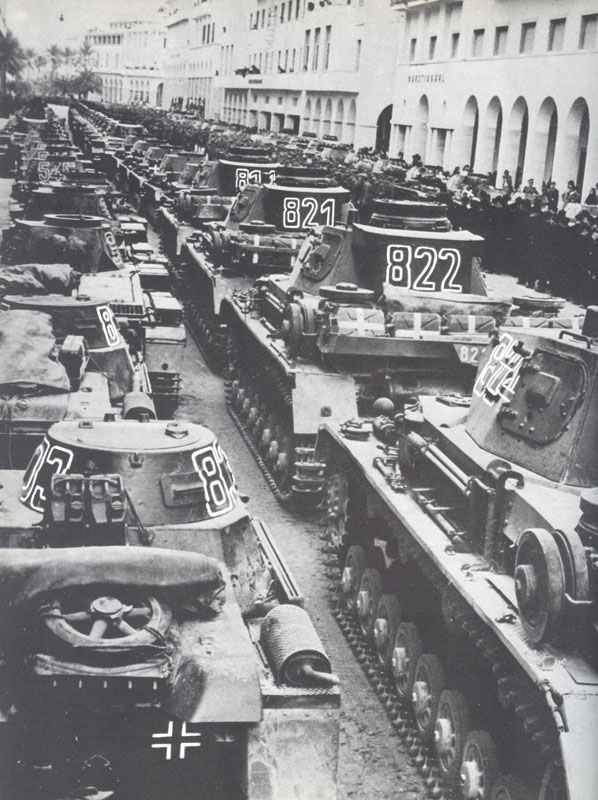
Key Deception Methods:
- Fake tanks built from tarps on vehicles
- Moving equipment at night to confuse spies
- Captured trucks dragging aircraft propellers to whip up dust clouds
- Palm branches tied to vehicles for camouflage
These tricks fooled the British. News reports claimed there were at least 500 German tanks and multiple divisions in Tripoli. Rommel’s efforts even earned him the Oak Leaves to his Knight’s Cross.
By March 31, 1941, Rommel’s men beat the British at El Ageila. A few days later, on April 4, they grabbed the port of Benghazi. Within just 12 days, his outnumbered forces took back all of Cyrenaica.
Siege of Tobruk
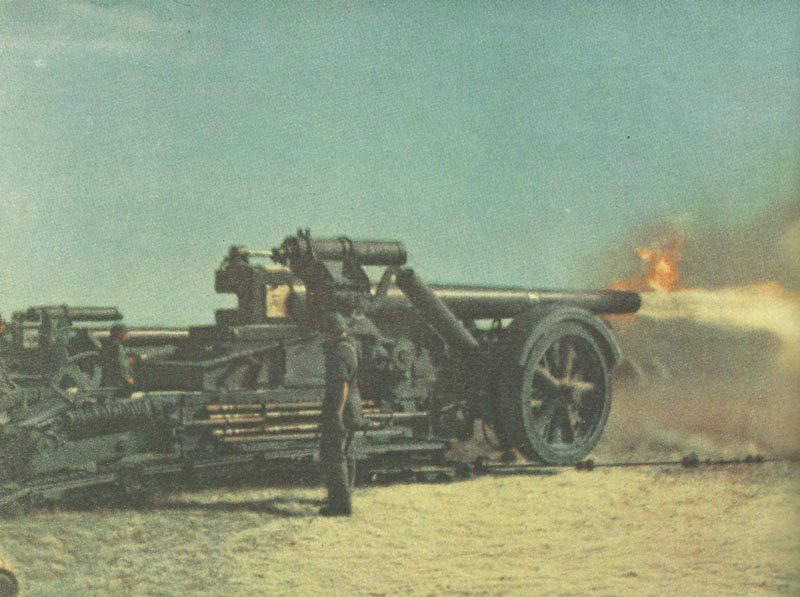
The Afrika Korps closed in on Tobruk by April 1941. This fortress quickly became a focal point in the desert war. Both German and Italian troops joined the siege.
April and May 1941 saw brutal fighting around Tobruk. Heavy losses piled up on both sides. Despite repeated assaults, the Axis couldn’t break in.
The British held out inside but couldn’t lift the siege. Supplies ran low for Rommel, forcing him to pull back from Tobruk on May 3, 1941.
In June, the British launched Operation Battleaxe, sparking fierce tank battles near Capuzzo and Sidi Omar. Rommel’s quick moves allowed him to defeat the British 7th Armored Division.
That win bumped him up to General der Panzertruppe. The combined German and Italian units became Panzer Group Afrika. Then, things went quiet until November 1941.
During Operation Crusader in November, British tanks outnumbered Rommel’s three to one. The Battle of Marmarica saw over a thousand tanks clash—probably the bloodiest fight in Africa.
Rommel still had to retreat west to El Ageila by January 1942. Supplies from Germany just weren’t getting through—most of them ended up at the bottom of the Mediterranean.
Battle of Gazala and Capture of Tobruk

Rommel kicked off his second big offensive in January 1942. He faced long odds—just 196 tanks against 500 Allied ones. His force was a mix of German and Italian units.
He leaned on deception again, setting fires to make it look like he was retreating. Convoys moved west during the day and then circled back at night with fresh supplies.
Battle Results (June 1942):
- June 6: 100 British tanks destroyed, 3,100 prisoners taken
- June 12: Another 120 British tanks gone
- After these losses, both sides had about the same strength
Rommel took El Gazala, opening the road to Tobruk. By June 18, his troops surrounded the fortress. The final attack started on June 20, 1942.

Tobruk fell on June 21, 1942. General Klopper and 35,000 British soldiers surrendered—the worst defeat for the British at that point.
Rommel got instant rewards for this. He became the youngest Field Marshal in the German army and received the Luftwaffe Pilot-Observer Badge with Diamonds.
Desert Fox Reputation
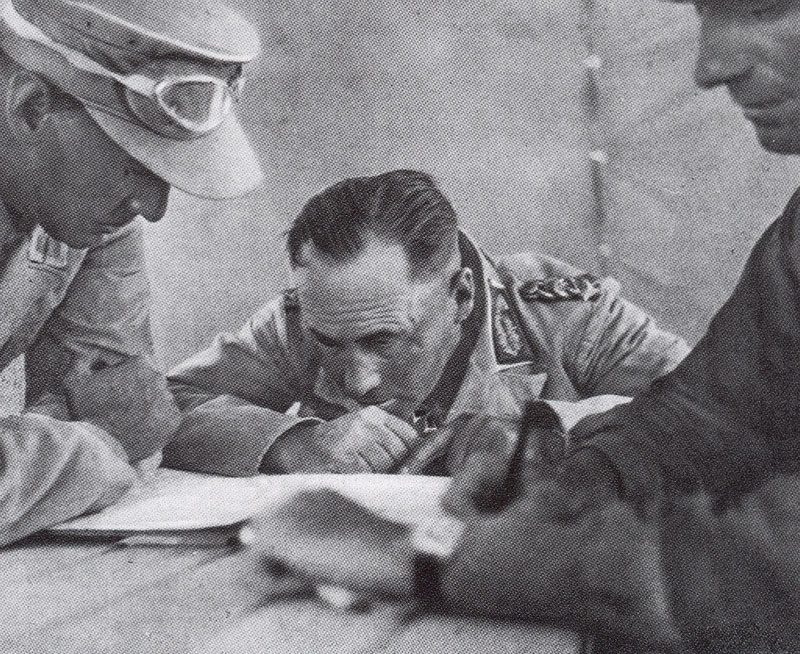
After Tobruk, everyone started calling Rommel the “Desert Fox.” His clever tactics and battlefield wins gave him a reputation that spread fast.
Rommel demanded a lot but led from the front. He’d fly over battlefields in a Storch just to see things for himself. He liked being close to the action, which wasn’t common for generals.
The British took notice. Their commanders started getting nudged to move closer to the front lines too. Rommel’s hands-on style became legendary.
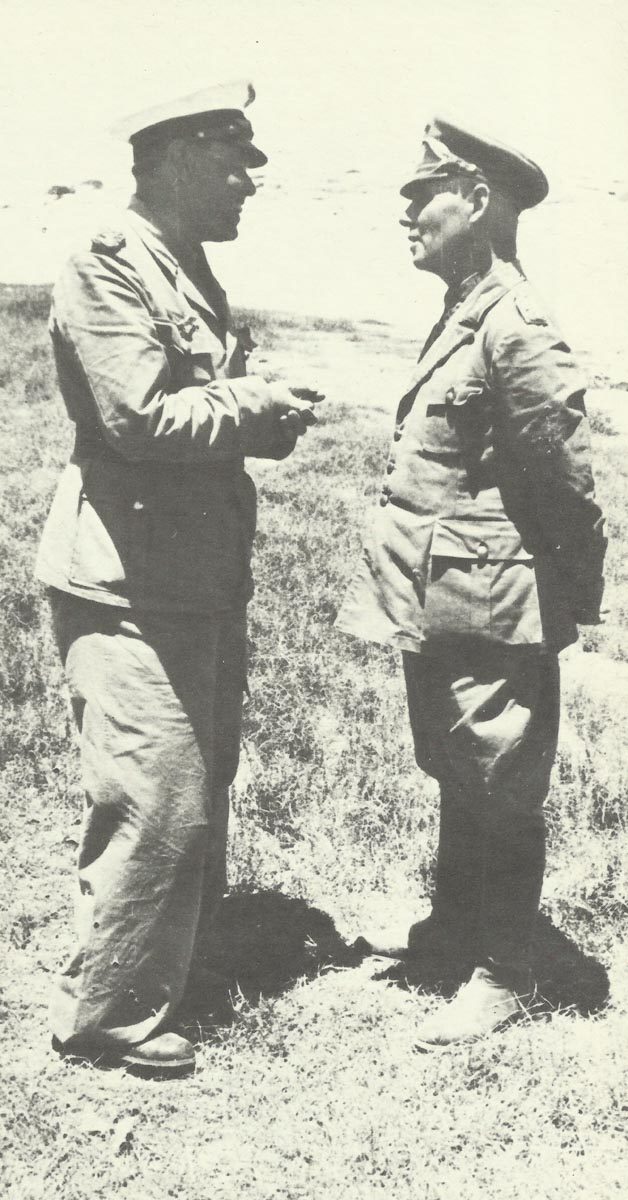
After Tobruk, Rommel chased the British into Egypt with just 44 working tanks. The Afrika Korps crossed into Egypt on June 23, 1942, aiming for Cairo and Alexandria.
Their advance stalled at El Alamein, with only 36 tanks left. Montgomery’s British troops had built massive defenses, including a 60-kilometer minefield from the sea inland.
Rommel tried one last big attack on August 30, 1942. Fewer than 100 German tanks charged the British lines. Fuel shortages and Allied air power stopped them cold.
By September, Rommel was out of options. Without supplies, the Afrika Korps couldn’t keep up with British reinforcements. The Desert Fox’s North African campaign was just about over.
Final Years: Normandy, Resistance, and The July Plot
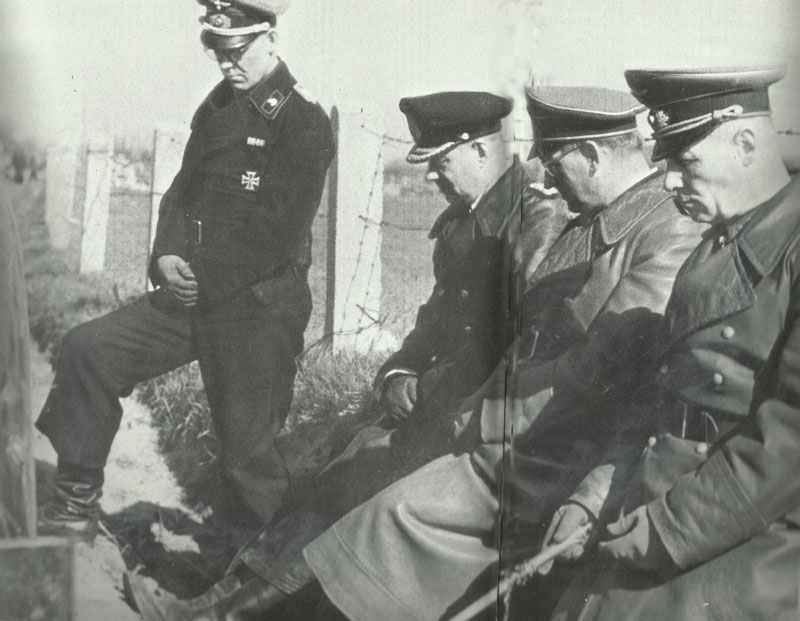
Rommel’s last year brought him right up against the Allied invasion of France and his own growing doubts about where Nazi Germany was headed. His wounds at Normandy happened around the same time as rumors about his role in a plot against Hitler.
Defense of Normandy and D-Day
Early in 1944, Hitler put Rommel in charge of beefing up the Atlantic Wall along the French coast. Rommel figured the Allies had to be stopped on the beaches or not at all.
He focused on planting mines and building obstacles. Rommel knew German troops couldn’t win a drawn-out fight against Allied air superiority.
When D-Day hit on June 6, 1944, Rommel was away visiting his wife. The invasion caught the Germans off guard.
He rushed back, but by then the Allies had already dug in on the beaches.
On July 17, 1944, Allied planes strafed Rommel’s car near Normandy. The attack threw him from the vehicle and fractured his skull. He was badly hurt and couldn’t continue leading his troops.
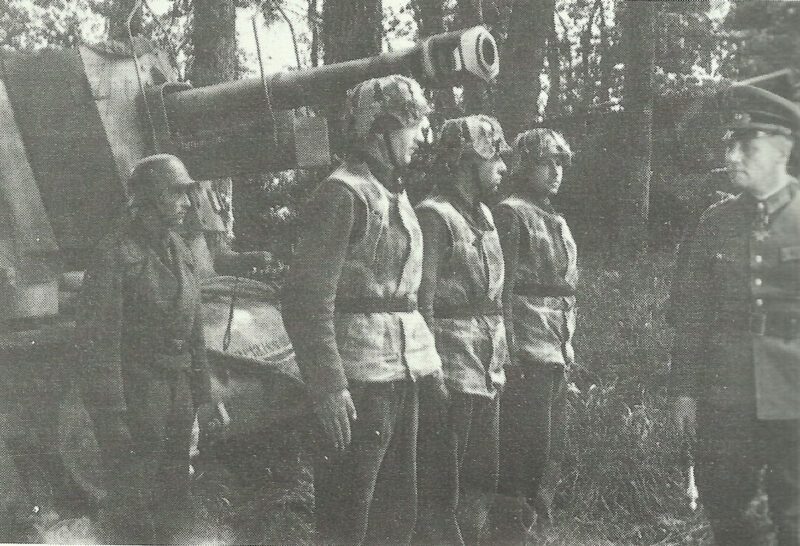
Relations with Hitler and Nazi Leadership
By 1944, Rommel’s relationship with Hitler had soured. He saw the writing on the wall—Germany was losing, and he started to doubt the Nazi leadership.
Rommel wanted Germany to make peace with the Western Allies. He believed dragging out the war would only destroy more German cities and lives.
His time in Normandy convinced him: German forces couldn’t stop the Allies. He lost faith in Hitler’s stubbornness and refusal to face reality.
Rommel had once supported Hitler, but now he saw him as dangerous for Germany’s future. This shift put Rommel in a risky spot.
Involvement in the July Plot
The July 20 plot was an attempt to assassinate Hitler and end the war. Many German officers got involved in the conspiracy.
No one’s really sure how deep Rommel’s involvement went. Most of the main conspirators died, so there’s not much evidence left.
After the plot failed, Hitler’s men suspected Rommel. On October 14, 1944, officers showed up at his house with an ultimatum.
They told him: stand trial for treason or take poison and spare his family. If he chose suicide, his reputation would remain intact, and his family would be safe.
Rommel took the poison. He died at 52, and the Nazis claimed he had succumbed to his earlier injuries.
Personal Life, Legacy, and Death
Rommel’s relationships shaped him—not just as a commander, but as a husband and father. His controversial death in 1944 capped off a life that still sparks debate. He managed to earn respect from both sides, even while serving under the Nazis.
Marriage and Family
Rommel married Lucia Maria Mollin back in 1916, during the First World War. Their marriage lasted 28 years, right up until his death.
They had a son, Manfred Rommel, born in 1928. Manfred went on to become a well-known politician and mayor of Stuttgart after the war.
Before he married Lucia, Rommel had a relationship with Walburga Stemmer, and they had a daughter named Gertrude. He kept supporting both mother and child financially throughout his life.
Rommel was a devoted husband and father. He wrote letters to his wife while away at war, always trying to stay connected despite his career.
Friends and family said he was caring and loyal at home—pretty different from his tough battlefield image.
Ethics and Views on Warfare
Rommel stuck to old-school military codes. He treated prisoners of war decently, unlike some other German commanders.
French soldiers captured by Rommel’s men generally got fair treatment. The Afrika Korps became known for following military ethics during the desert war.
He cared more about military tactics than Nazi politics. Rommel rarely talked about ideology—he focused on strategy and leadership.
Speed and surprise were his trademarks. Those moves earned him the “Desert Fox” nickname from both sides.
He didn’t agree with some Nazi policies, especially when it came to civilians. That eventually put him at odds with Hitler and other Nazi leaders.
Death and Posthumous Reputation
In 1944, Rommel got tied to the anti-Hitler plot. Nazi officials gave him a choice: trial or suicide, with promises to protect his family if he chose the latter.
On October 14, 1944, Rommel took poison and died at 52. The Nazis announced he’d died from his Normandy wounds.
He got a state funeral with full military honors. The truth about his death only came out after the war ended.
Military history still remembers Rommel as a top tank commander. Military academies study his tactics even now.
His legacy is complicated. Many admire his skills but can’t ignore that he served the Nazi regime.
His son Manfred Rommel later became a democratic politician, helping to restore the family name in postwar Germany.
Frequently Asked Questions
Rommel’s career raises a lot of questions—about his tactics, his victories, and what he really believed. His uneasy relationship with Nazi leaders and the impact on his family still get people talking.
What were Erwin Rommel’s major military achievements?
Rommel became famous leading the Afrika Korps in North Africa. His tactical flair earned him the “Desert Fox” nickname from both sides.
He scored dramatic victories against the British in Libya and Egypt. Rommel’s quick advances and creative use of tanks constantly caught the enemy off guard.
Back in World War I, Rommel made a name for himself as a young officer. He earned the Pour le Mérite, Germany’s highest military award, for his actions in Romania and Italy.
He was one of Germany’s most popular generals. Even his adversaries respected his battlefield skills and leadership.
How did Erwin Rommel’s strategies influence modern warfare?
Rommel shook things up by mixing tanks, infantry, and air support in a way few had seen before. These combined arms tactics eventually became the backbone of modern military operations.
He loved speed and surprise. Rommel would show up where nobody expected him, throwing enemy plans into chaos.
Deception played a huge part in his playbook. He’d set up fake positions and movements to trick enemy commanders, keeping them guessing.
Modern leaders still pore over his North African campaigns for inspiration. There’s something timeless about getting results with limited resources.
What is the significance of Erwin Rommel’s role in the North African campaign?
Rommel took command of the German Afrika Korps in 1941. He came to help Italian forces who were struggling against the British in North Africa.
Instead of playing defense, he flipped the script and went on the offensive. Rommel managed to push British troops back across hundreds of miles of desert.
His victories in North Africa made him a household name. Newspapers on both sides couldn’t stop talking about him.
Even his enemies respected his tactical skills. The North African campaign really cemented his reputation as Germany’s top field commander.
How has Erwin Rommel been portrayed in historical and popular media?
Movies and books often paint Rommel as an honorable soldier who stood against Hitler. They highlight his involvement in the 1944 assassination plot.
Historians still argue over whether he truly opposed Nazi policies. Some think he just focused on fighting, not politics.
Popular culture likes to call him the “clean” Wehrmacht general. That idea suggests he fought with honor and stayed away from war crimes.
Academic historians, though, dig deeper. They look at both his military brilliance and his connections to the Nazi regime—it’s not a simple story.
What was the relationship between Erwin Rommel and the Nazi Party leadership?
At first, Rommel had Hitler’s full support. The Nazi leader promoted him quickly and gave him major commands.
Things soured as the war dragged on. Rommel started criticizing Hitler’s decisions and leadership.
He even joined a group of officers plotting to overthrow Hitler and seek peace with the Allies.
Once Nazi authorities caught wind of the plot, they gave Rommel a grim choice. He could go to trial or take his own life to shield his family’s honor.
What impact did Erwin Rommel’s military career have on his family life?
Rommel married Lucie Mollin in 1916. They had one son, Manfred.
He spent long stretches away from home because of his military service. Those deployments meant his family often had to get by without him.
During his campaigns, he wrote letters to his wife, always starting with “Dearest Lu.” In these letters, he poured out his thoughts about the war and his worries for his family.
Lucie hid these letters from the Nazis after Rommel died. Eventually, “The Rommel Papers” got published and let people peek into his personal world.
His forced suicide in 1944 shattered his family. Nazi officials told him they’d protect Lucie and Manfred if he agreed to die quietly instead of facing a public trial.
References and literature
Mythos Rommel (Maurice Philip Remy)
Rommel (David Irving)
Infanterie greift an: 12. Isonzoschlacht (Erwin Rommel)


